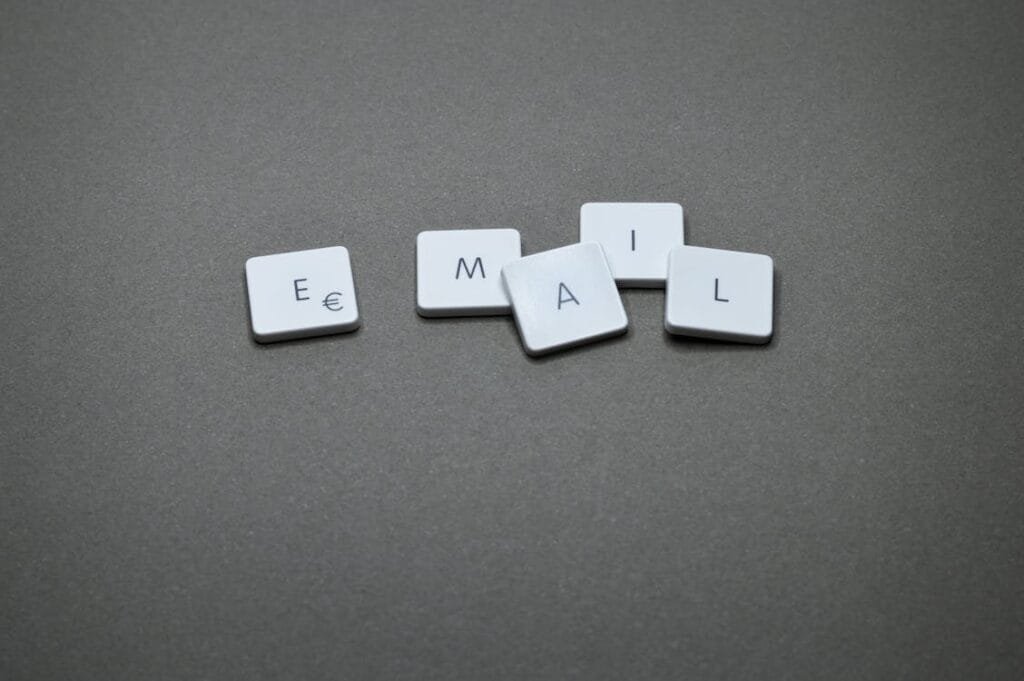Importance of Understanding Audience
Figuring out your audience is like finding the map when you’re lost—it’s key to any marketing success. Knowing who you’re talking to shapes customer vibes, gets people invested, and can make or break your campaigns.
Personalized Experiences Expectation
Folks today want things their way—it’s the age of the bespoke experience. Looping back to some juicy numbers from Zendesk, about 68 percent of folks expect their interactions to be all about them (HBS Online). That tells marketers to dive deeper into consumer psychology and play the game of personal customization. When a brand gets this right, customer satisfaction and loyalty shoot through the roof. People cling to brands that truly vibe with their needs and interests.
Check out this table to see how personalization shakes things up for consumer habits:
| What Folks Want | Pct. (%) |
|---|---|
| Personalized Vibes | 68 |
| Brands Talking About Real Issues | 64 |
What this says is—knowing what your audience wants and addressing it is a mighty strategy. To get crackin’ on figuring out your crew, scope our guide on how to define target audience.
Benefits of Target Market Analysis
Digging into who your market is can be gold. It not only clues you into what your audience likes, but steers product tweaking and marketing magic. By being in the know about your crowd, businesses can whip up messages and offers that fit like a glove. As Shopify puts it, aiming straight at your folks gives the whole strategy a facelift.
Shiny perks of getting a read on your target market:
- Boosted Buzz: Crafting messages that hit home can seriously fire up engagement.
- Ramped Up Sales: Knowing why people decide to buy helps mold tactics that turn maybe-buyers into die-hard fans.
- Smart Spending: Focusing on the right crowd stops you from throwing cash away, so dollars go where they’ll do the most good.
- Forever Fans: Build a brand-consumer bond over shared values, and you’re looking at loyalty city.
For those who want to dive into cracking their audience like a pro, peeking at our reads on target audience analysis and target audience demographics can be real eye-openers. At the end of the day, understanding your target audience makes marketing click and propels your business to shine.
Demographic vs. Psychographic Data
It’s all about understanding who’s who and what makes ’em tick. You got demographics painting the broad strokes—age, gender, where folks call home, the cash they rake in, what they do for a living—and on the flip side, psychographics dive into the juicy bits: interests, lifestyles, and what really makes the crowd tick.
Key Marketing Channels
Demographics are like your go-to map for deciding on the best places to shout out about your brand. It’s all about picking the right platforms where your crowd hangs out. Think about it: if you’re pitching to high schoolers, they’re all over Instagram or TikTok. For your folks, it’s more likely to be Facebook or email. This intel lets businesses make savvy calls on where to toss their ad dollars.
Here’s a little cheat sheet:
| Demographic Factor | Marketing Hotspots |
|---|---|
| Age 18-24 | Instagram, TikTok |
| Age 25-34 | Facebook, Instagram, Email |
| Age 35-50 | Facebook, Email |
| Age 50+ | Facebook, Snail Mail, Email |
| Income $40k-$60k | Social Media, Email |
| Income $60k+ | Social Media, SEO, Influencers |
Product Preferences Insight
Psychographics? That’s where you get under the skin of your buyers, figuring out what they love and why they stick with certain brands. Interests, values, that sort of thing. It’s like eavesdropping on their personal chatter to land on their good side.
Picture this: an eco-friendly company churning out green goodies would want to tap into consumers who live and breathe sustainability. They’d rave about their green creds in ads. And if you’re cracking into the fitness market, you might partner with health gurus to win over the gym rats. Psychographic data lets you make smart moves on what to sell, how to brand it, and the kind of story you tell.
Here’s a quick guide:
| Psychographic Factor | Influenced Product Choices |
|---|---|
| Lifestyle | Activewear, health snacks, outdoor gear |
| Values | Green products, fair trade goods |
| Interests | Tech toys, gym gear, travel stuff |
| Attitudes | Loyalty through cause-driven campaigns |
| Behaviors | Online browsing, brick-and-mortar visits |
Mix demographic and psychographic wisdom, and you’ve got a full picture of your ideal customer. This juicy combo lets you tweak your game plan, give customers better experiences, and see bigger bucks. Want more tips? Check out our guide on target audience analysis.
Primary Research and Audience Insights
Nailing down who your audience is, it’s a big deal when you’re trying to cook up the perfect marketing storm. And if you’re looking to get the inside scoop, nothing beats going straight to the source—your customers. Here’s a look at why getting chummy with your audience through primary research is worth its weight in gold.
Value of First-Hand Data
When you talk directly to your peeps, you’re getting the good stuff—info that’s been designed just for you, not the stats of some dusty old report found online (BigCommerce). Think of it like standing at the source of a stream rather than scooping up water downstream. You’ll dig into what makes your customers tick, what keeps them up at night, and see their buying behavior firsthand. This is sort of like having your finger on the pulse of your market.
Now, no need to reinvent the wheel here. There are plenty of ways to gather this gem of data, with classics like surveys, chats, and focus groups leading the pack. Here’s the lowdown on what you’d be getting:
| Benefit | Description |
|---|---|
| Customization | Insights that speak directly to your business pains and gains |
| Real-Time Feedback | Get the reactions hot off the press on what you’re offering |
| Improved Targeting | Get the map you need to navigate your customer landscape |
Plus, get this: a cool 68 percent of people think everything should have their name on it, as per the Zendesk Customer Experience Trends Report 2022. So, jumping into the deep end with primary research could be the ticket to keeping your squad happy and loyal.
Tailoring Business Strategies
Raw data from your research gives you the keys to adjusting your game plan according to the latest consumer moves. Just look at how McDonald’s navigated the 2008 financial crisis with finesse, switching their pitch to meet customer needs like a boss (HBS Online).
Creating a buyer persona isn’t just a fancy term; it’s your secret weapon. It’s made up by:
- Gathering intel and data
- Pinpointing pain cravings and objectives
- Chopping your audience into easier-to-manage bits
- Building out a detailed persona map
- Syncing these personas with your marketing goals
- Keeping a watchful eye on the trends to stay current (The Social Media Hat)
With these insights, company bigwigs can mold their plans to better match what their audience is jiving with. For more goodies on zeroing in on who you’re talking to, check out our target audience analysis section.
Significance of Targeting the Right Audience
Nailing down your target audience is like hitting the bullseye in marketing—it separates the winners from the rest of the pack. Knowing who you’re talking to supercharges your marketing mojo, giving campaigns the zing they need to really connect with folks out there.
Enhanced Customer Experience
Today’s shoppers don’t just want a special experience; they demand it. The Zendesk Customer Experience Trends Report 2022 says 68% of people expect to be treated like VIPs, with all interactions molded to match their tastes. When businesses zero in on the right crowd, they can shoot out personalized messages and whip up products and offers that hit home. What they’ve got to say stands out, making customers perk up and pay attention.
Understanding what makes your audience tick lets you shape everything—from how you chat with them to the stuff you offer and the face your brand shows the world. This kind of focus cranks up customer loyalty and satisfaction like turning up the volume. Check out this table to see how a sharper customer experience can really boost business outcomes.
| Enhanced Experience | Impact on Business |
|---|---|
| Personal Talk | More Engagement |
| Spot-on Product Picks | Better Conversion Rates |
| Happy Customers | More Devotion and Sticking Around |
Marketing Campaign Effectiveness
Homing in on the right crowd also means your marketing packs more punch. Segment the folks you most want, and your revenue could skyrocket by up to 760% (HBS Online).
When your marketing efforts align with the likes and actions of your chosen audience, expect those campaigns to really shine. Skip the scatter-shot approach and let your dollars work harder. Knowing who you’re talking to means you can cook up plans that hit where it counts, leading to better use of time and money—and way better results.
Here’s the deal with targeted marketing campaigns:
- Better Reach: Zero in on those likely to take the bait.
- Higher Bang for Your Buck: Put your marketing moola where it counts most.
- Loyalty for the Long Haul: Keep those who feel understood coming back for more.
Spotting your perfect audience isn’t just a neat trick; it can up your marketing game, make your customers stick, and send your business growth through the roof. For more intel, check out target audience analysis and target audience demographics.
Role of Customer Data in Marketing
Importance for Marketers
Marketers are all about getting into the nitty-gritty of customer data. A jaw-dropping 82% can’t imagine working without top-notch customer info, and who can blame them? Knowing what makes customers tick—like what buttons they’re clicking, their Saturday night plans, or what they bought after binging on four hours of cat videos—it’s all gold. When they’ve got their fingers firmly on the pulse of their audience’s preferences and habits, they’re practically wizards when it comes to grabbing attention and making things happen.
Get this: if you’re smart about slicing and dicing your audience, you can boost your coffers by a mind-boggling 760%. That’s some serious cash just from knowing who you’re talking to!
| Importance of Customer Data | Percentage of Marketers Banging the Drum |
|---|---|
| You gotta have high-quality customer insights | 82% |
| Nailed-it segmentation = massive revenue potential | Up to 760% |
Influence on Marketing Success
Customer data isn’t just some optional mighty add-on. It’s the secret ingredient to marketing magic. When marketers crack the code, they create campaigns that feel less like ads and more like conversations. Better vibes, stronger loyalty, and yes, those sweet revenue gains.
Segmenting customers? It’s like herding cats into neat little boxes they actually like—imagine! When that’s done right, businesses can watch their revenue charts spike like never before.
And don’t underestimate the power of a good chat around the dinner table or water cooler. When customers start yakking about your brand because you really “get” them, that’s advertising you just can’t buy.
Diving into who your audience truly is—what makes them sigh, smile, and scroll back—is the ticket to refining your reach and hitting bullseyes every time. Want to dig deeper? Check out our spots on understanding audience traits, getting into audience minds, and profiling your perfect crowd.
Benefits of Effective Segmentation
Knowing the perks of good segmentation is a game-changer for CEOs, business owners, and marketing whizzes. By getting segmentation right, companies can tweak their strategies and see a nice boost to their profits.
Revenue Increase Potential
When you break down your audience into groups that share likes and buying habits, your revenue can jump a ton. Studies show that knowing and aiming at the right crowd can push up your profits by a whopping 760% (HBS Online). This big win happens when marketing messages hit home with the folks most likely to buy.
| Segmentation Method | Potential Revenue Increase (%) |
|---|---|
| Demographic Segmentation | 150 |
| Psychographic Segmentation | 300 |
| Behavioral Segmentation | 500 |
| Effective Overall Segmentation | Up to 760 |
Splitting your audience by age, interests, or shopping habits? You’ll notice your sales ticking upwards as you better meet their needs (HubSpot).
Personalized Consumer Experiences
Nowadays, it’s all about making the customer feel special. By zooming in on who’s buying, and crafting personas, businesses can zero in on the folks who really care. This means more sales and less waste on adverts that don’t do the trick (GRIN).
Provide experiences that click with your audience, and watch your customer base grow loyal and trusting. Take a page from Amazon, who nailed it by making buyers feel heard and appreciated, boosting satisfaction and loyalty.
Check out our other reads on target audience analysis and identifying target audience to dive deeper.
Adapting to Consumer Cravings
Consumer behavior—always on the move, just like that squirrel in your backyard. Marketers have to play catch-up, tweaking their strategies to fire up the crowd and stay in the game. Get inside the head of the audience: that’s the secret sauce for businesses to keep their edge.
Marketing Strategies with a Twist
Bending marketing tactics to match the consumer vibe helps businesses tweak how they chat with folks, keeping things fresh and fitting customer whims. Dive into the mix of data from customer relationship management (CRM) systems, social media snooping, and good old-fashioned surveys. This clever intel lets marketers whip up messages and gab that really hit home for their crowd.
Picture this, businesses could win over their audience by:
- Making content feel like it’s meant just for them
- Mixing up content styles to fit different crowds
- Making sure stuff works on phones (who doesn’t love their own pocket cinema?)
- Cookin’ up interactive content where users can jump in
These sharp moves keep the chattiness on point, not getting lost in the noise. Knowing where folks hang out—be it online or off—is your GPS to hit up the right spots (Shopify).
Peek at McDonald’s Playbook
Take McDonald’s during the 2008 financial rollercoaster. People’s taste buds and wallets were changing gears fast. McDonald’s switched over its marketing gears, whipping up meals that sang to both shifting palates and tighter budgets. This shift let them jive with folks even when wallets were crying (HBS Online).
McDonald’s groove through that bumpy ride shows why watching and reacting smartly to audience mojo matters. Tune into what they’re saying, crunch that market data, and switch up those marketing moves to get the crowd nodding along. Check out more on sussing out your audience flavor with our pieces on target audience analysis and target audience demographics.
Impact of Consumer Relationships
Getting a grip on how we connect with consumers can make or break a marketing plan. These connections don’t just keep the lights on; they steer buying decisions and spark buzz that gets folks talking.
Purchasing Decision Influence
The bond businesses build with their customers paves the way for trust and loyalty, steering the decision-making ship. Studies show chatter among folks accounts for between 20% to 50% of all buying choices. Yeah, that’s a big deal, right? (HBS Online)
| Influence Factor | Percentage Impact |
|---|---|
| Word of Mouth | 20% – 50% |
When a business hits it off with its customers, it’s like throwing a boomerang—purchases come back around and new buyers join the fray. Marketing moves that hit home with the audience help in nurturing these bonds.
Word of Mouth Importance
Word of mouth—it’s not just a whisper in the wind. It’s a megaphone for brands, wielded by everyday folks. It keeps growth ticking along, which means businesses gotta keep their eyes on customer engagement. Solid relationships spin the satisfaction wheel faster, cranking out more buzz and recommendations (Harvard Business School Online Blog).
The weight of word of mouth in making marketing decisions can’t be underestimated. Companies should aim to delight their customers, so they’ll gush about their experiences to their pals and family. Often, this spills into the marketplace, welcoming newbies who already trust the brand because their cousin or best friend vouched for it.
Pouring time and effort into consumer relationships lets companies cruise through tough markets. For those keen on getting a clearer view of their crowd, digging into target audience analysis and target audience segmentation strategies can open up doors to juicy insights.




















